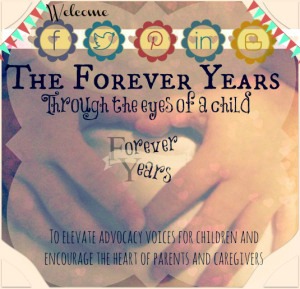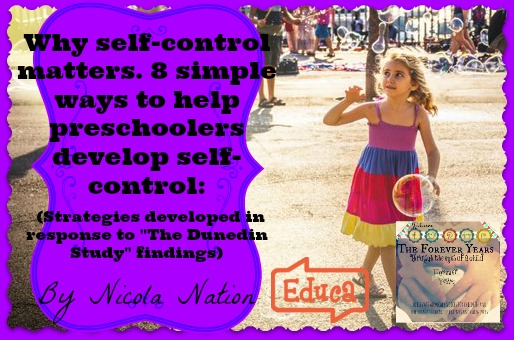 Continuing our series of articles on findings discovered by the “Dunedin Longitudinal Study”…
Continuing our series of articles on findings discovered by the “Dunedin Longitudinal Study”…
“The Dunedin Study“ identifies five major personality types. These can be recognised in children as young as three years of age and do not change as we grow older: they are the personality types we are born with, they seem to be “in our blood”.

Most people fall into the groups classified as “Well Adjusted”, “Confident”,”Reserved” or some combination of these three: together these three groups cover 83% of the population. “Well Adjusted” individuals tend to fit in with their surroundings, sometimes being “in the lime light”, but not having to all the time. They tend to be able to “get along” with others, for the most part. “Confident” individuals are the risk takers and “go getters”. Like those described as “Well Adjusted” they don’t necessarily always have to be in the limelight, but they are thrill seekers and will “go out on a limb” to try a new idea. An example used in the documantary about “The Dunedin Study” findings, “Why Am I?” was New Zealand’s A.J Hackett, founder of “Bungy Jumping”.

 Alan John “A. J.” Hackett is a New Zealand entrepreneur who popularised the extreme sport of bungy jumping. He made the famous bungy jump from the Eiffel Tower in 1987 and founded the first commercial bungy site in 1988. Wikipedia
Alan John “A. J.” Hackett is a New Zealand entrepreneur who popularised the extreme sport of bungy jumping. He made the famous bungy jump from the Eiffel Tower in 1987 and founded the first commercial bungy site in 1988. Wikipedia
Those classified as “Reserved” make up 15% of the general population. Reserved individuals tend to “hang back” and watch things for a bit first, before getting involved. They are often a little shy and are more comfortable in smaller groups. These traits do not, however, prevent them living full and productive lives.
According to “The Dunedin Study” monitoring of 1037 people born in 1972-3, “Well Adjusted”, “Confident” and “Reseved” individuals, 83% of the population, usually go on to have “successful life outcomes”. By their 40s they are usually happily married or in positive relationships, are persuing careers and/ or parenting well. The remaining 17% consists of two personality types (again, identifiable in early childhood) which go on to adult lives which create immense angst and unhappiness– both for themselves and for the rest of the community.

Source: Google images.
People with a personality type described in “The Dunedin Study” as “Undercontrolled” are usually highly strung and don’t cope well with novelty or change. These individuals are usually quick to anger and struggle with self control. (Self control was discovered by “The Dunedin Study” to be one of the biggest indicators of a successful life outcome, a characteristic which was even more important than a high IQ). Children identified as being in the “Undercontrolled” personality group at age three were more likely to go on become adults with diabetes, sexually transmitted diseases, heart disease and lung problems.

Source: Google images.
These same adults, despite disliking change or novelty, were described as “impulsive” and “sensation seekers”. They were more likely to drink, take drugs and/ or have sex at an early age and to manifest other behaviour which takes a toll on physical and emotional well-being over time. Children identified as being in this category at age three were highly likely to have been in serious trouble with the law by the time they were 23.
The other 7% of the population have personalities classified, according to “The Dunedin Study” as being “Inhibited”. These individuals do not usually commit crimes or become violent. They seem, instead, to “turn inward on themselves” and what may initially manifest as shyness or social awkwardness in a pre-school child becomes extreme self-consciousness to the point where, in many cases, teenagers manifest “school refusal” ( a refusal to go to school which differs from truancy, in that it is an anxious/ depressive reaction to school, rather than a rebellious act against going to school). Teaching in High Schools in Japan for five years, I saw a number of examples of this, the Japanese call it Hikikomori.
Hikikomori (ひきこもり or 引き籠もり Hikikomori, literally “pulling inward, being confined”, i.e., “acute social withdrawal“, is a Japanese term to refer to the phenomenon of reclusive adolescents or adults who withdraw from social life, often seeking extreme degrees of isolation and confinement. The term hikikomori refers to both the sociological phenomenon in general and to the people belonging to this societal group. Hikikomori have been described as recluses, loners, or “modern-day hermits.” [Source: Wikipedia].
An example of a young Japanese man living this kind of life is shown in “Why Am I?” People in this personality group have a difficult time attending school during the High School years and frequently struggle to leave home and establish a life for themselves in the adult world. They tend to be fearful, anxious, highly strung, closed to change or novelty and prone to depression. Whilst “hikikomori” is a Japanese term to describe teenagers or young adults who behave in this way, it is now a recognised problem in developed countries around the globe.
 What is remarkable is that “The Dunedin Study” first identified these five personality types in pre-school children. These types appear to be set and have persisted in study participants, even becoming more pronounced, into adulthood. This is, as the study says, one thing for those in the three “normal” groups, but what do we do if a child is identified as being in the “at risk” groups (“Undercontrolled” or “Inhibited”)?
What is remarkable is that “The Dunedin Study” first identified these five personality types in pre-school children. These types appear to be set and have persisted in study participants, even becoming more pronounced, into adulthood. This is, as the study says, one thing for those in the three “normal” groups, but what do we do if a child is identified as being in the “at risk” groups (“Undercontrolled” or “Inhibited”)?
 What this study does establish are theoretically meaningful connections between 3-year-old children’s behavioral styles and their adult personalities. There is more to establishing this answer than satisfying intellectual curiosity. If early-emerging behavioral differences did not predict outcomes, behavioral scientists, parents, and teachers could safely ignore such individual differences. However, because such differences do shape the course of development, information about these individual differences can be harnessed to design parent-training programs and school-based interventions to improve children’s development. Ironically, although demonstrations of continuity are often viewed as deterministic and pessimistic, such findings provide the strongest support for the urgency of early intervention. [Source: http://citeseerx.ist.psu.edu/viewdoc/download?doi=10.1.1.576.9452&rep=rep1&type=pdf]
What this study does establish are theoretically meaningful connections between 3-year-old children’s behavioral styles and their adult personalities. There is more to establishing this answer than satisfying intellectual curiosity. If early-emerging behavioral differences did not predict outcomes, behavioral scientists, parents, and teachers could safely ignore such individual differences. However, because such differences do shape the course of development, information about these individual differences can be harnessed to design parent-training programs and school-based interventions to improve children’s development. Ironically, although demonstrations of continuity are often viewed as deterministic and pessimistic, such findings provide the strongest support for the urgency of early intervention. [Source: http://citeseerx.ist.psu.edu/viewdoc/download?doi=10.1.1.576.9452&rep=rep1&type=pdf]
The most important thing to remember about “The Dunedin Study” and the reason we here at “The Forever Years” love it, is that it investigates nurture as well as nature and results show that nurture has an important part to play in whether those children with “Undercontrolled” or “Inhibited” personality types go on to have “positive life outcomes” or not. Personality traits can overlap. Nurture can “push” children from “functional” to “non-functional” personality types and vice versa. For example, a “Reserved” child who isn’t adequately socialised could become “Inhibited”. An “Inhibited” child, with the right supports in place, can be “drawn out” to become “Reserved”.
Findings from “The Dunedin Study” show conclusively that for some individuals, multiple problems tend to aggregate. A portion of children on the study who manifested the “Undercontrolled” or “Inhibited” personality types had these in combination with delays in significant areas such as speech and language acquisition and in taking their first steps. For a portion of them (interestingly, these children were predominantly male) learning to read was also a great struggle. This in turn led to a dislike of school, leaving school early and, following on from this, a high incidence of involvement in criminal activity. “Something as innocent as delayed speech then, if not dealt with early, can gather force over the course of a lifetime,” says “The Dunedin Study” Associate Director, Dr. Terrie Moffit.
Director Professor Richie Poulton says knowing now (because of study results) that some kids have a much higher chance, for example, of ending up in trouble with the law, can provide an opportunity to avert negative life outcomes by creating individually tailored intervention plans. Such things as significant learning delays, poverty, childhood abuse or neglect, witnessing domestic violence, substances consumed by a child’s pregnant mother whilst he or she is still in the womb, an absence of attachment, structure, boundaries, positive encouragement or correct professional intervention for particular significant issues, invariably lead towards “negative life outcomes” when combined with particular personality types.

Children who come into the world, then, with “Undercontrolled” or “Inhibited” personality types could be described as “guns loaded by Nature”. But it is Nurture, meaning the presence or absence of certain positive or negative factors, that determines whether or not the “triggers” of these guns are pulled. “Nurture” and “early positive intervention” are our hope. The childhood years are indeed, when we look at the set personalities that we are born with, “The Forever Years”, as these personalities persist into adult life. The outcomes don’t need to be negative, however, if “at risk” personality types are parented accordingly and if we teach our children “Self Control”, an all important trait which is learned, rather than fixed and which we will discuss in a separate article about “The Dunedin Longitudinal Study”.

 Preschoolers with good self-control have a better chance of growing up to become healthy, wealthy and crime-free. Here are 8 simple ways teachers can improve children’s self-control – and make classrooms more harmonious.
Preschoolers with good self-control have a better chance of growing up to become healthy, wealthy and crime-free. Here are 8 simple ways teachers can improve children’s self-control – and make classrooms more harmonious.















































